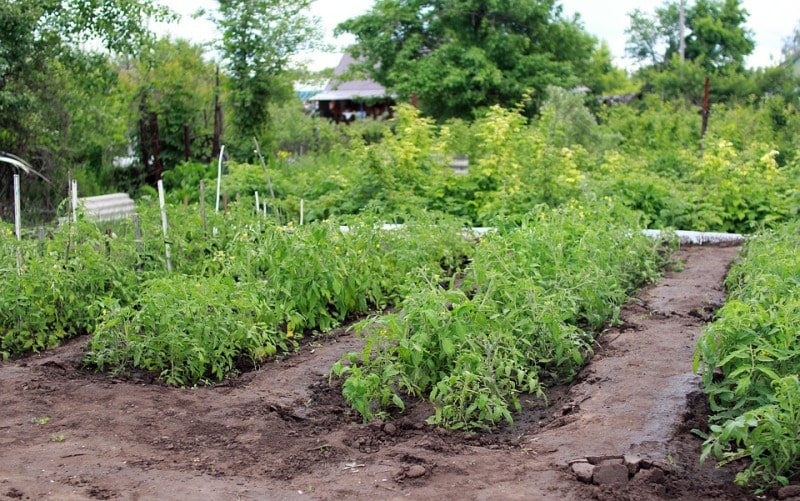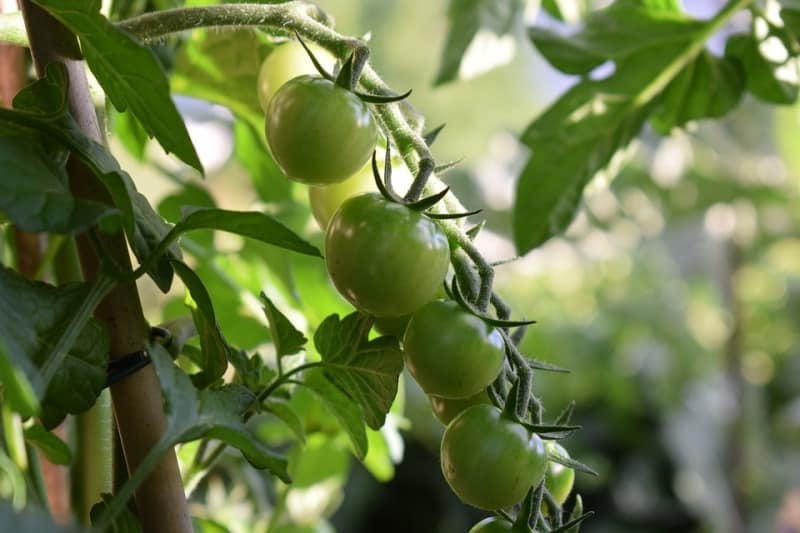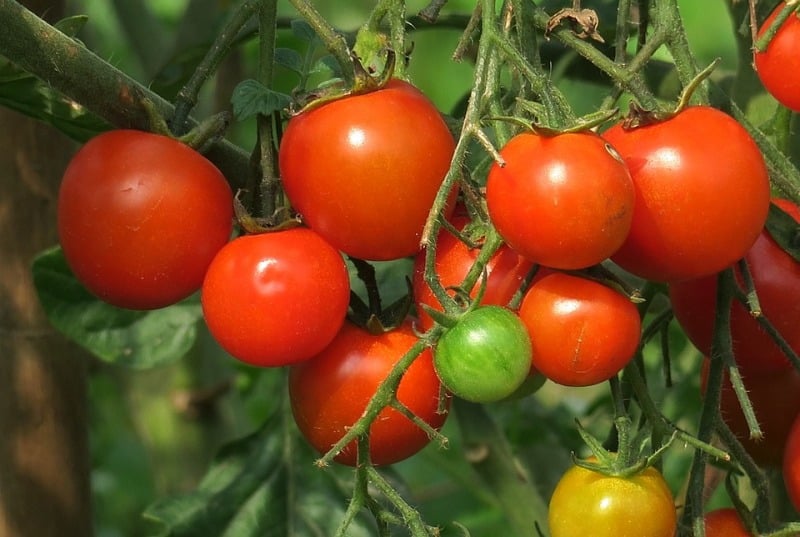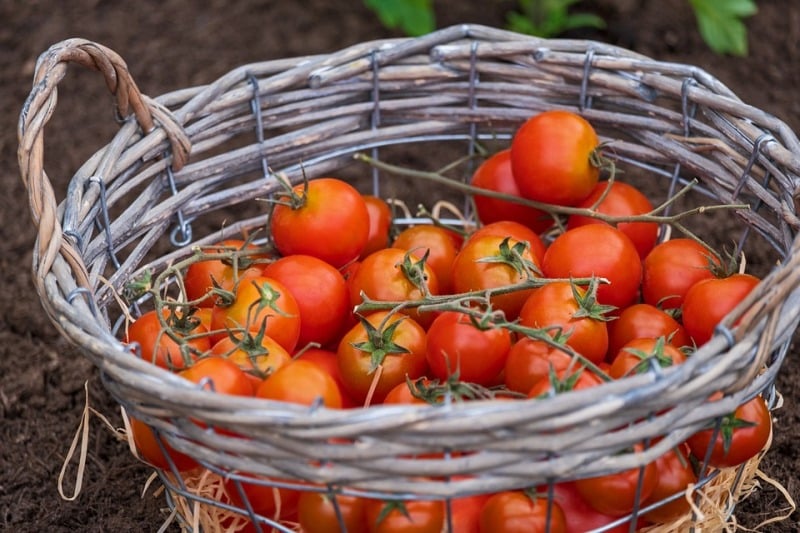A step by step guide for Tomato farming in summer
Here, we discuss the profitable summer tomato farming in India, planting, care and harvesting procedure along with other cultivation practices.
Tomato is an important commercial vegetable crop of India. It is having a major source of vitamins and minerals and rich in medicinal value. It is one of the main popular salad vegetables and is taken with great relish. It is commonly employed in the cannery and made into soups, conserves, pickles, ketchup, sauces, pure paste, powder, juice, etc
Tomato is one of the most widely cultivated crops in India. Tomato is an important vegetable crop regarding both income and nutrition. Tomatoes farming are predominantly summer crops, but it can be cultivated throughout the year.
Summer tomato varieties:

Here we list out the different tomato varieties suitable for the summer season;
- Beef master Tomato
- Celebrity Tomato
- Early Girl Tomato
- Arkansas Traveler Tomato
- Brandywine OTV Tomato
- Burbank Slicing Tomato
- Costoluto Genovese Tomato
- Eva Purple Ball Tomato
- Homestead Tomato
- Black Cherry Tomato
- Brandywine
- Beef Steak
- Blondkopfchen
- Black Krim
- Azoychka
- Dixie Golden Giant
Climate requirement for growing tomatoes
The tomato farming is a warm-season crop. The temperature of 20 to 25°C is considered to be ideal for tomato cultivation, and the excellent quality red color is developed in tomatoes at 21 to 24°C temperature.

Due to intense heat (temperature above 43°C), the plants get burnt, and flowers and small fruits fall, whereas less than 13°C and greater than 35°C decreases the fruits and the red color production ratio.
You may also like Coriander Farming Profit, Cost, Project Report.
Land preparation for tomato plantation:
Tomato grows very well on a wide range of soils, but it develops well on deep, well-drained soils with good drainage ability. Sandy loam to medium black soils is considered to be suitable for tomato cultivation in summer.
For tomato farming, soil pH must be at 6 to 7 with soil with excellent drainage property.
Water requirement for tomato farming in summer:

- To get maximum yield from tomato crop in summer, use drip irrigation method.
- During summer give water 6 to 7-day intervals.
- If possible, use drip irrigation. With the help of this irrigation method, you can able to save about 60 to 70 percent of the water and increase 20%-25% more production.
- During summer it is necessary to irrigate the tomato crop once a week while irrigating it once in every two weeks is sufficient.
Planting season and time of tomatoes:
The best time for tomato cultivation in the summer season will be May- July. In summer season artificial hormone application not necessary but fruit set to increase two times as well as yield due to hormone application.
You may also check the Urban Farming Techniques.
Tomato farming care:

Let us discuss caring of tomato farming in summer season;
- Increase watering as the temperatures rise if the soil is drying more speedily. Check soil moisture daily and irrigate if it begins to feel dry more than one inch deep. Tomatoes normally require 1 inch of water per week, but they may require two or more inches in extremely hot, dry conditions.
- Spread a 2- to 3-inch layer of straw mulch over bare soil to give insulation so the moisture doesn’t evaporate too quickly and to prevent the soil from heating too much. If tomato beds are covered in black plastic mulch, increase straw mulch on top of the plastic so it doesn’t absorb too much heat. Move the mulch off the plastic after temperature will be cool.
- Install a six-foot stake at either end of the tomato bed on the side that receives direct sunlight. Stretch a length of cheesecloth or other thin white fabric between the stakes and staple it in place to make a sunshade. The thin fabric still allows light through however, minimizes its intensity so the tomato fruits don’t suffer sun-scald. Remove the sunshade once temperatures drop below 90 degrees F.
- Fertilization encourages plants to grow, but too much fertilizer will produce tomato plants without much fruit. When the temperature is very high, you’ll have more plant than the roots can support. Excessive growth makes tomato plants weak and vulnerable to damage from insects and diseases.
- Stop fertilizer applications during extremely hot weather to prevent new growth on stressed tomato plants. Resume regular fertilization once the temperature will be cool.
- Tomato plants require an inch or two of water a week, and a deep soaking is better than a little water every day. Regular watering will help to prevent tomatoes from developing cracks. Too much water will suffocate tomato plants’ roots.
You may also like Snake Gourd Farming.
Weed control:
- First weeding operation start after 20 days to 25 days of transplanting. Always keep clean and weed-free farm because weed competes with crop also they provide shelter to the various harmful insect.
- Mulching is good option control weed after black plastic (50 microns) mulching is mostly used which controls about 95% weeds.
- Otherwise, you can use organic mulch like sugar cane trash, which controls about 60% of weeds.
Harvesting tomatoes in summer:

The first harvesting of tomato plants usually starts in 75 to 90 days from planting. While considering the market distance and transport mode, tomato must be harvest as follows.
Green stage: If you are sending tomato for the long-distance market, then harvest at Maturity stage with green color.
Pink stage: The tomato should be harvested by changing the color of the green color to the pinkish color appeared. It is better to send such tomato fruits to nearby markets.
Maturity stage: To sell tomato in the local market, harvest after the tomato is reddish on the tree.
Full maturity: In this state, the tomato is fully reddish and slightly red on the tree. Such tomatoes are useful to make durable materials such as ketchup, sauce, soup, chutney, etc.
That’s all folk about summer tomato farming techniques, tips, and ideas. Keep growing tomatoes!.
You may also like Growing Hydroponic Cabbage.